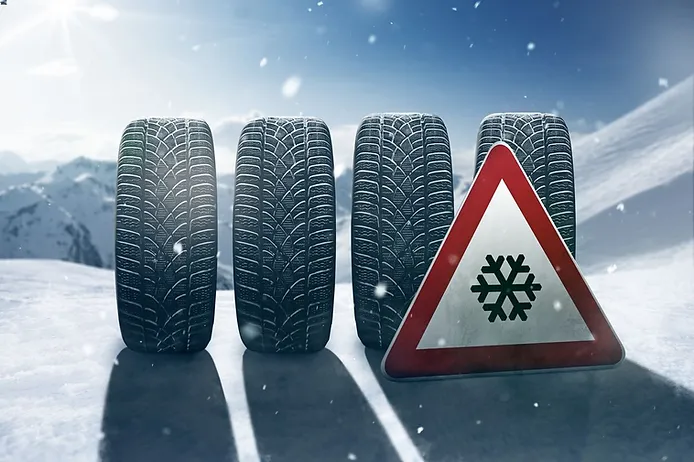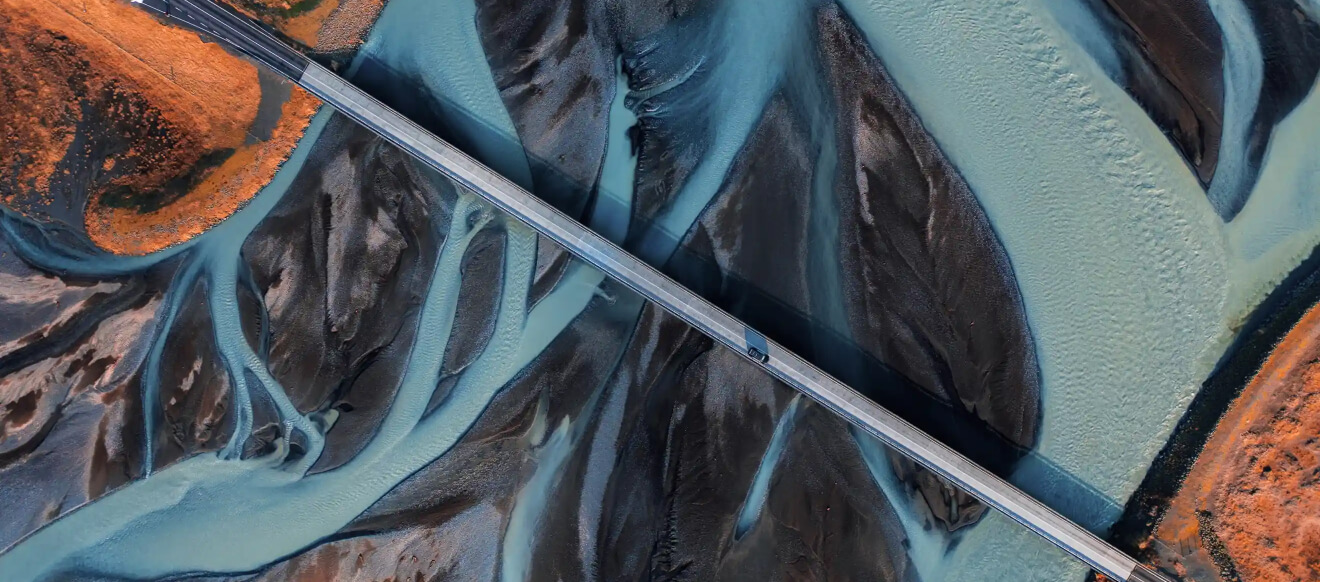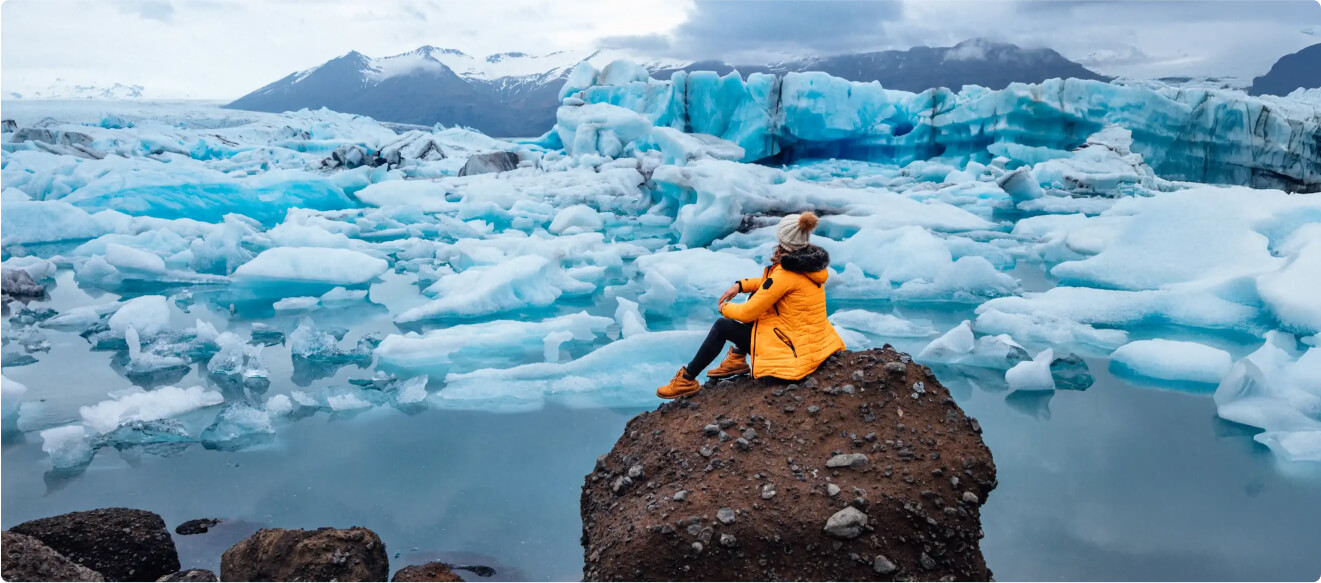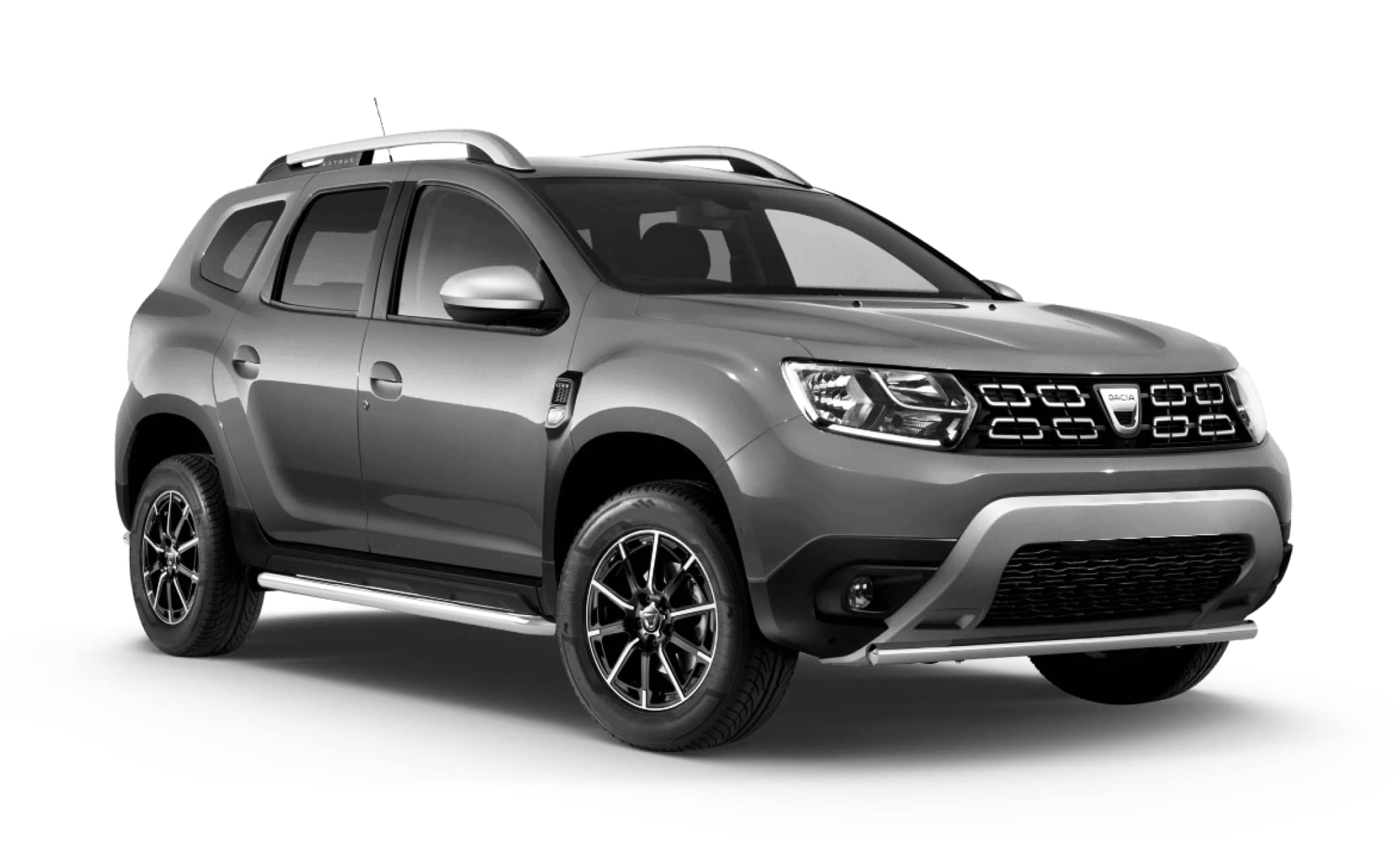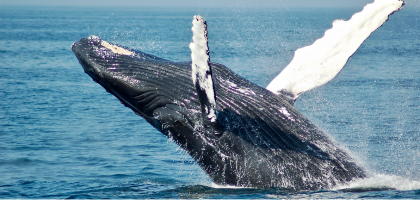Winter in Iceland isn't for the faint of heart. Locals don't take chances. They slap on snow tires because they know what's up. Tourists? They either get with the program or end up in unwanted and unnecessary trouble. Think you can handle Iceland's icy roads without them? Good luck.
But are snow tires in Iceland actually required, or is it just common sense? Do rental cars come equipped, or do you need to make a special request? If you don't know, you're playing with fire. If you are renting a car in Iceland, this guide sets the record straight so you can drive smart and stay out of trouble.
Why Are Snow Tires Necessary in Iceland?
Iceland's weather can go from clear skies to a snowstorm before you can even complain. As the Icelandic saying goes, 'If you don't like the weather in Iceland, just wait five minutes.' With such unpredictable conditions, Icelandic snow tires are a must-have for any vehicle on the road.
Regular tires are useless on ice. Icelandic snow tires are designed to bite into snow and grip slippery roads, giving you the control you need when the weather turns nasty. These aren't just helpful. They're your lifeline on Iceland's winding, icy roads.
Without the best winter tires for Iceland, you're not just risking a fender bender. You're risking your whole trip. If you're planning to drive in Iceland, snow tires aren't optional. They're non-negotiable.
Legal Requirements: When Are Snow Tires Mandatory?
The Icelandic winter tires law is clear. From November 1st to April 14th, you need winter tires with at least 4mm (0.15 in) tread depth. In Iceland, you're responsible for using tires that match the road conditions. During the winter in Iceland, winter tires are mandatory.
Flexibility in Dates
If winter hits early or sticks around longer than usual, the rules can change. Authorities can extend the winter tire season if needed, so don't get caught off guard. Pay attention to local updates, and don't assume you're off the hook and that winter tires in Iceland are no longer needed just because the calendar says it's spring.
Fines and Penalties for Non-Compliance
Think you can get away without winter tires in Iceland? You're so wrong. Getting caught without the right tires during the mandatory period means a fine that will ruin your day. And if you're using studded tires past the allowed date, that 20,000 ISK ($140) per tire fine will remind you to check the calendar next time.
Do rental cars in Iceland have snow tires?
Yes! In Iceland, rental cars with snow tires are required during the colder months. At Cars Iceland, we ensure that every vehicle comes equipped with quality winter tires at no extra cost during the mandatory period. This way, you can drive safely and confidently, no matter the road conditions.
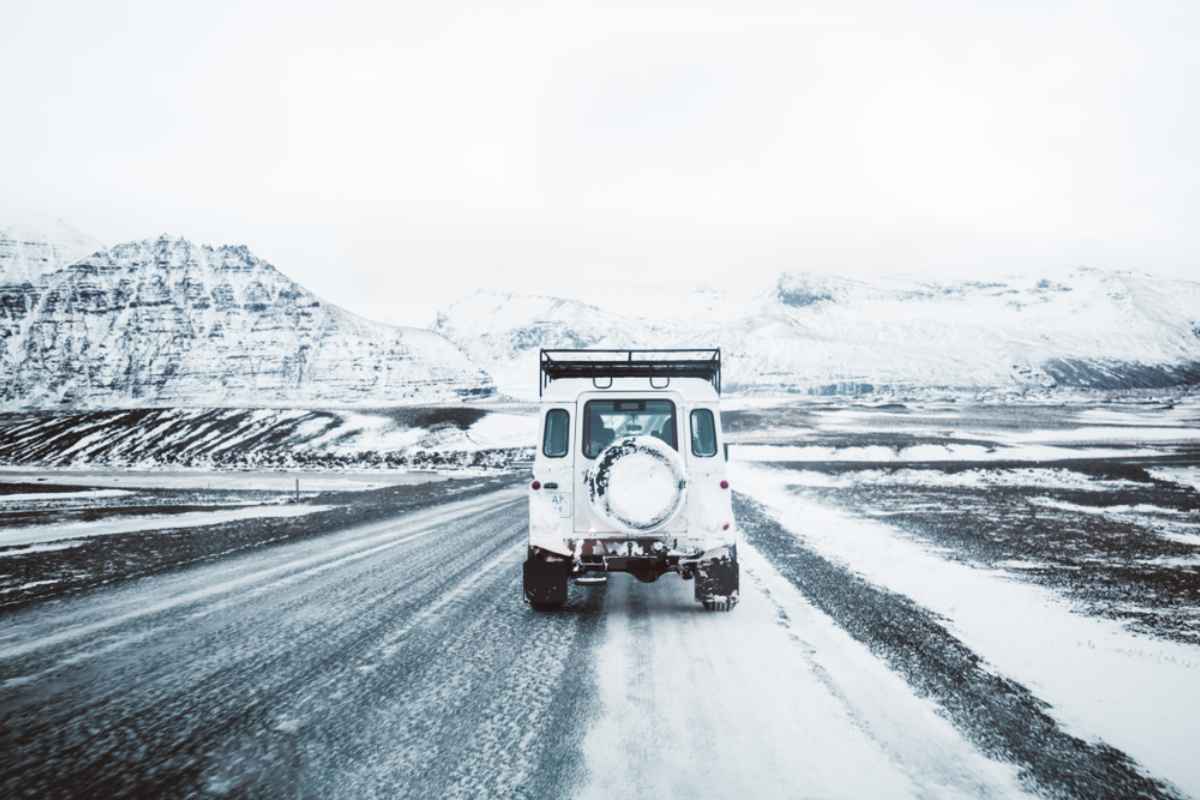
Legal Requirements for Tourists Renting Cars
If you're renting a car in Iceland this winter, here's what you need to know:
- Winter Tires Included: As we stated before, some rental companies, like Cars Iceland, provide winter tires during the mandatory period at no extra cost. But don't just assume... Double-check with your rental company before booking.
- Double-Check Other Rentals: If you're booking with another company, make sure they include winter tires. Avoid surprises by not automatically assuming they're included in the rental price.
- Studded Tires Rules: Studded tires give a better grip on ice, but they're not allowed everywhere. Reykjavik, for example, prefers you skip them to protect the roads.
- Snow Chains Not Needed: Snow chains aren't allowed in Iceland, except for snow plows. They're not necessary, so don't bother looking for them.
Studded vs. Non-Studded Tires: Pros & Cons
Picking the right snow tires in Iceland isn't just a choice. It's about staying safe on icy roads. Should you go with studded or non-studded tires? Here's the breakdown:
Studded Winter Tires
Pros studded tires
- Top Grip on Ice: Studded tires dig into ice and hard snow, giving you solid traction.
- Better Braking: They help you stop faster on slippery roads.
- More Stability: These tires keep you in control when roads get really slick.
Cons studded tires
- Noisy Ride: They're louder, especially on dry pavement.
- Higher Fuel Costs: More resistance means more fuel use.
- Road Damage: They wear down roads faster. That's why Reykjavik isn't a fan and standard winter tires in Iceland are the preferred option.
- Price and Wear: They cost more upfront and wear out faster.
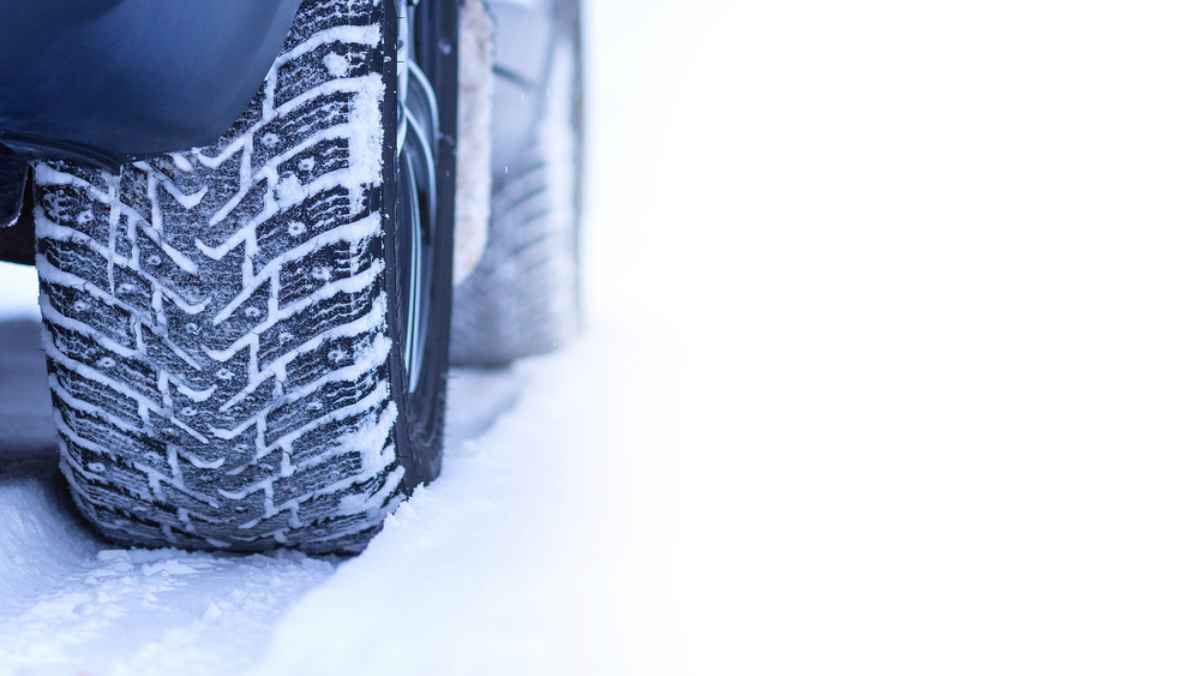
Non-Studded Tires
Pros non-studded tires
- Quieter Drive: These tires are quieter and more comfortable.
- Road-Friendly: They don't damage the roads.
- Versatile Performance: They're good on snow, slush, wet, and dry roads.
Cons non-studded tires
- Less Grip on Ice: Not as strong on solid ice.
- Limited Control in Extreme Ice: They work well on snow but aren't great on thick ice.
Which Tires Should You Use in Iceland?
For most visitors, non-studded tires do the job. They're quiet, reliable on snow, and better for the roads.
If you're heading into icy areas, consider studded tires for extra grip with your car rental. Just remember, Reykjavik restricts their use.
Before renting, make sure which Icelandic snow tires they are including. Most rentals come with non-studded tires, but it's best to double-check.
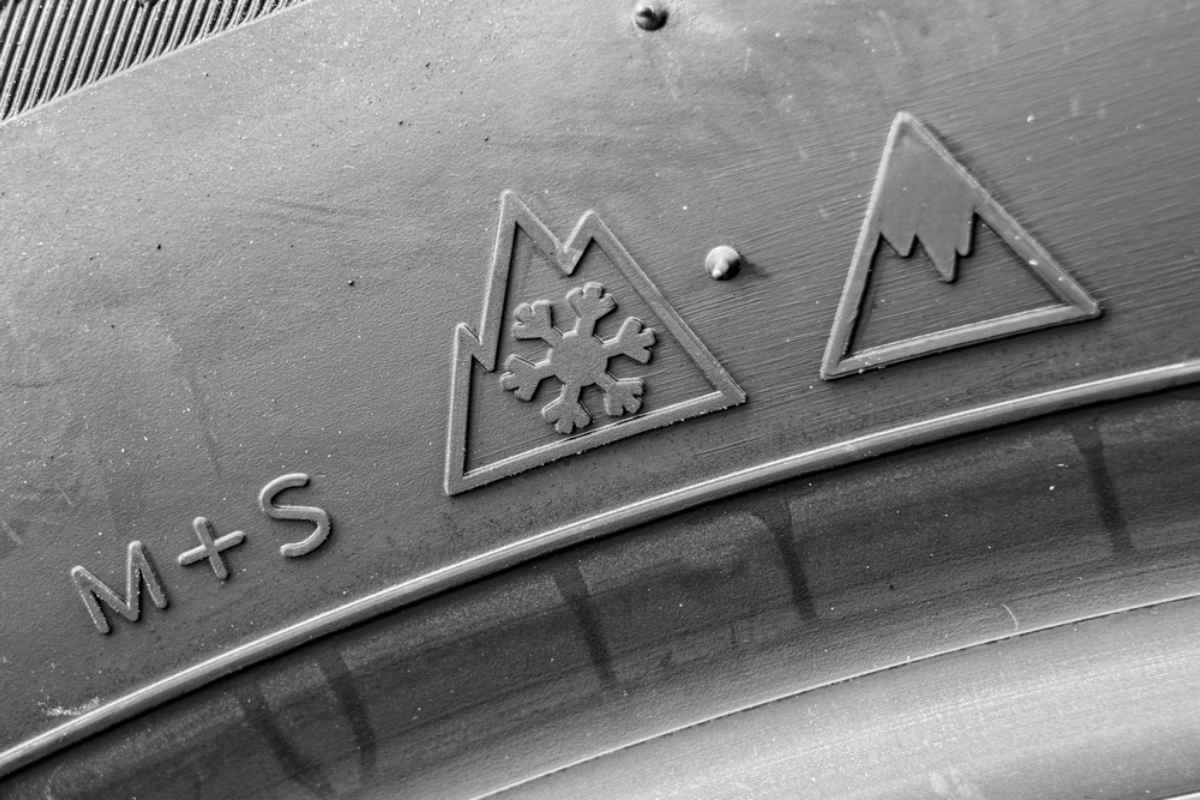
Winter Driving Tips for Tourists
Winter driving in Iceland isn't like anything you've seen before since most people come from places where it does not snow as often or as hectic as in their home countries. Make sure you’re familiar with Iceland's winter driving laws to stay safe on our roads:
- Rent a 4x4 with Winter Tires in Iceland: Don't get stuck or lose control on icy roads. Choose a four-wheel-drive vehicle with winter tires. It's a game-changer for grip and safety.
- Check Weather and Road Conditions: Always check road updates on Umferdin.is and weather conditions on Vedur.is before you start your trip. Download the SafeTravel app too. It lets you register your travel plans, so help can find you fast if needed. Check the updates regularly.
- Limited Daylight: In December, daylight is short, around 4-5 hours. By February, it will increase to about 8 hours. Begin your trips early to make the most of the daylight.
- Icy Roads: Roads can be slippery, especially in winter. Reduce your speed and keep a safe distance from other vehicles to avoid accidents.
- Closed Roads and Barriers: Closed roads are closed for a reason. Don't ignore signs or barriers. They indicate unsafe conditions that could leave you stuck or in danger.
- Unpredictable Roads: Iceland's roads can switch from smooth pavement to gravel without warning. This is common in rural areas. Stay alert and adjust your speed to keep control.
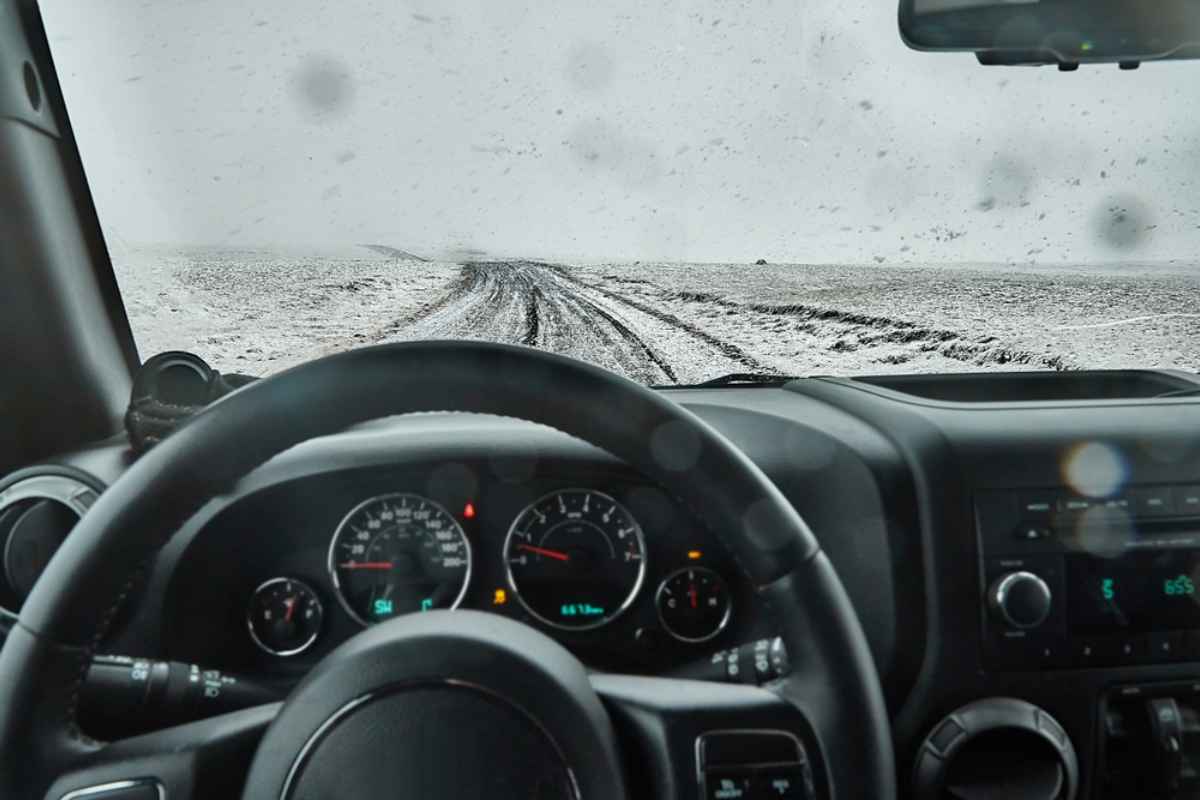
Understanding Icelandic Road Signs and Conditions
There are some unique Icelandic road signs that you might not be familiar with back home. Here are a few you should be aware of:
- Icy Road Sign: A red and yellow triangle with a snowflake means the road ahead is icy. Slow down and keep a firm grip on the wheel.
- Gravel Road Sign: This sign warns that the pavement is ending and gravel is coming up. Reduce your speed to avoid skidding.
- Single-Lane Bridge Sign: These bridges are common. Yield to oncoming cars and wait your turn.
- Strong Winds Sign: This warns of powerful gusts that can push your car. Slow down and stay alert.
Safety Tips for Ice and Snow-Covered Roads
Driving in Iceland's winter conditions needs extra care:
- Slow Down: Snow and ice make roads slippery. Drive slower and be cautious.
- Keep Your Distance: Leave more space between you and other cars. It gives you time to stop safely.
- Stay Smooth: Avoid sudden braking or sharp turns. Move gently to keep control of the car.
- Control a Skid: If you skid, steer in the same direction and ease off the gas. Don't hit the brakes.
- Headlights On: Headlights must be on all day, every day, in Iceland. It helps others see you better.
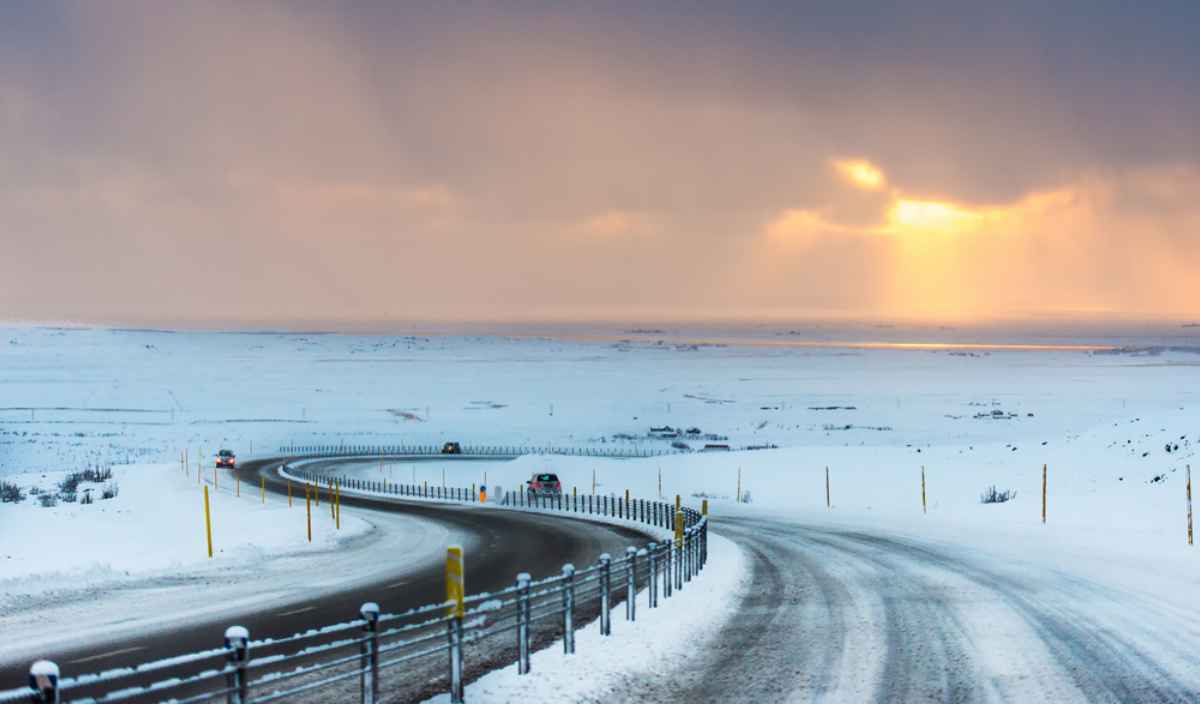
Emergency Equipment and Safety Gear
Pack these items to be prepared when driving in winter conditions:
- Spare Tire and Tools: In case of a flat tire, you'll need these.
- Paper Map: GPS might not work everywhere. This is when a paper map can help you find your way.
- Snow/Ice Scraper and Shovel: Not all rentals provide them, but you'll need them to clear snow and ice.
- Strong Rope: Useful for towing or emergencies.
- Warm Clothes and Blankets: Stay warm if you get stuck or have to wait for help.
- Flashlight and Batteries: Necessary for visibility in the dark.
- First Aid Kit: Be ready for minor injuries.
- Charged Phone and Power Bank: Keep your phone charged for emergencies.
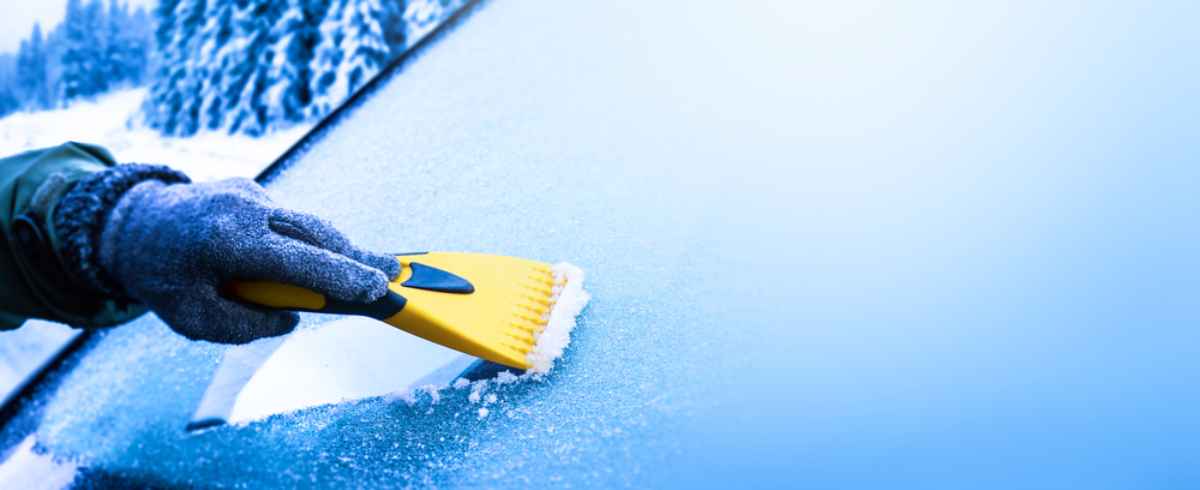
Renting a Car in Iceland: What You Need to Know
Before renting a car in Iceland, it's useful to know a few key things. Prices are typically lower, and there are fewer tourists since this is our off-peak season. Keep in mind that daylight hours are shorter. In December, the sun rises at 11 AM and sets at 3 PM.
Insurance Considerations for Winter Driving
Make sure you're properly insured when driving in Iceland. At Cars Iceland we offer the following car rental insurance by default:
- Collision Damage Waiver (CDW) and Third-Party Liability (TPL) are standard options.
- Super CDW reduces the cost you pay if the car gets damaged.
- Gravel Protection (GP) is useful as loose gravel is common on Iceland's roads.
- Sand and Ash Protection (SAAP) is recommended, especially for trips along the South Coast.
Choosing the Right Vehicle for Snowy Conditions
A 4x4 vehicle is the best option for driving on snow and ice in Iceland. Good choices include:
- Dacia Duster: Fuel-efficient and reliable in winter.
- Suzuki Jimny: Compact yet excellent for snow and hilly terrain.
- KIA Sportage: Suitable for all road conditions.
- Toyota RAV4: Safe and dependable in snow.
- Jeep Renegade: Great for icy roads.
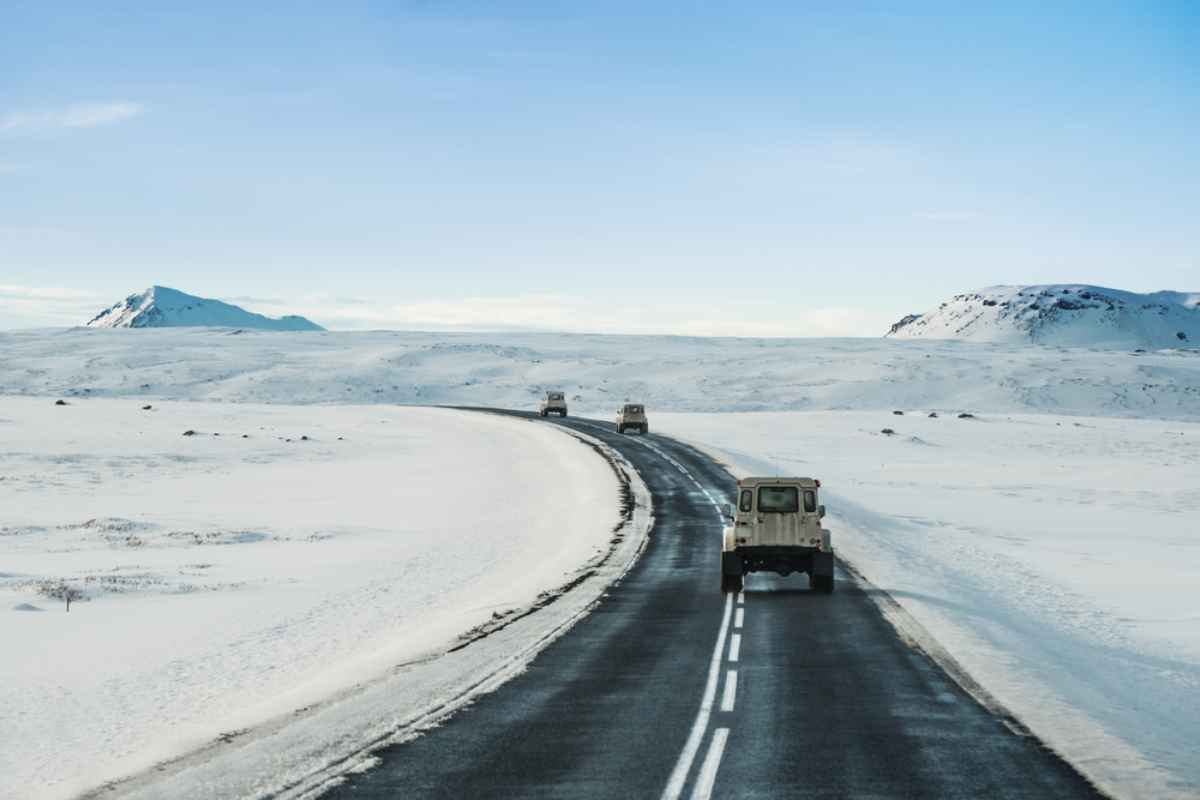
How Cars Iceland Ensures Safe Winter Driving
At Cars Iceland, we equip all our vehicles with winter tires from November 1st to April 15th at no extra cost to you. We also have comprehensive insurance packages, including CDW, GP, and SAAP, for complete coverage at some of the best prices in the country.
Snow Tires & Road Safety: What Experts Recommend
Experts agree that snow tires in Iceland provide better grip and control on icy and snowy roads, reducing the risk of skidding and accidents. These tires also shorten braking distances, helping drivers stop safely, even on slippery surfaces.
A study from Science Direct found that studded tires reduce fatal crashes by 42% on roads covered with ice or snow compared to non-studded winter tires. This makes them an excellent choice for extra safety.
Experts recommend checking tire pressure regularly, as cold temperatures can cause it to drop. When renting a car in Iceland, choose one with snow tires and other safety features like anti-lock braking systems (ABS). For maximum safety on icy roads, consider studded tires.
FAQ: Common Questions About Winter Driving in Iceland
Do rental cars in Iceland come with winter tires?
Yes, Cars Iceland provides winter tires on all rentals during winter at no extra cost. Most other rental companies in Iceland also include them, but always confirm.
How much does it cost to rent a car with winter tires in Iceland?
A 2WD vehicle, such as a Kia Rio, can cost USD 51 per day during the winter season. With Cars Iceland, winter tires are included for free in your rental.
Is it difficult to drive in Iceland in winter?
Yes, winter driving in Iceland can be challenging due to icy roads, strong winds, and limited daylight. Caution, preparation, and winter tires are essential for safe driving.
Is it difficult to drive in Iceland in December?
Yes, driving in Iceland in December is challenging due to icy roads and unpredictable weather—it's then essential to adhere to Iceland's winter driving laws and use the best winter tires for Iceland.
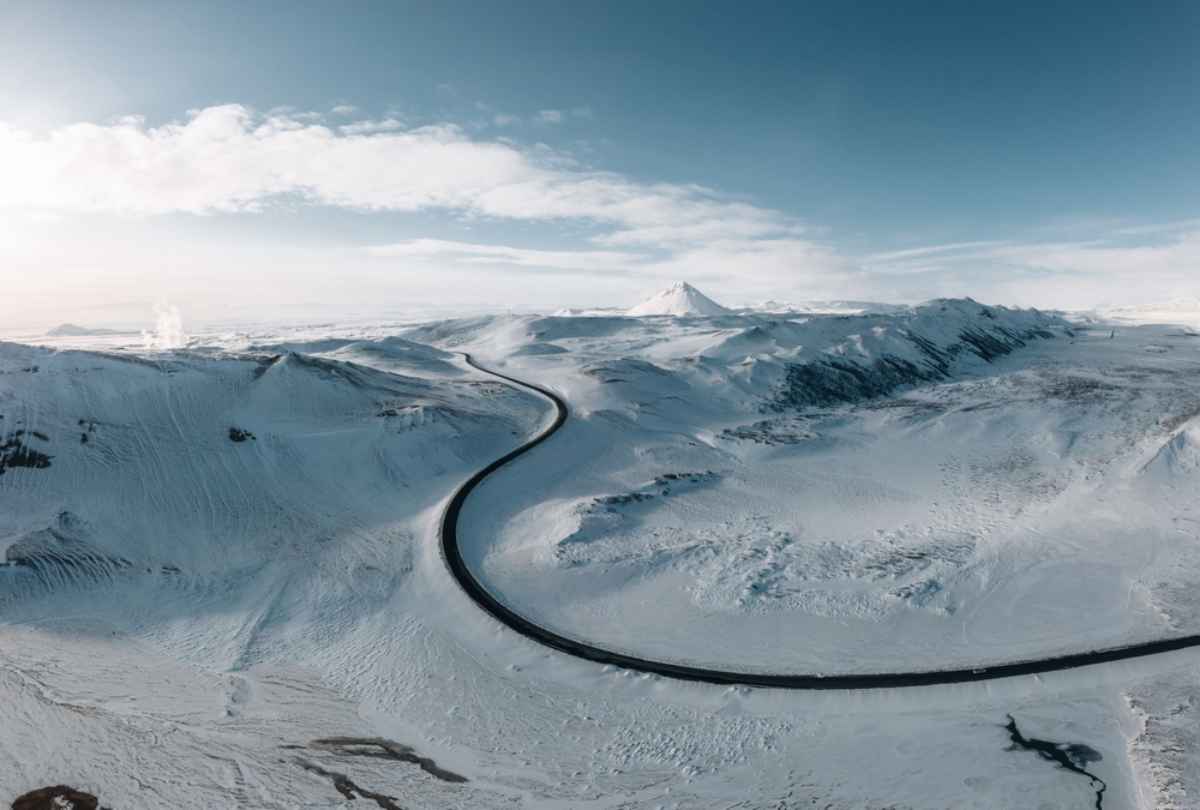
Do you need winter tires in Iceland? Are they mandatory by law?
Yes, winter tires are required from November 1st to April 15th for safe driving on icy and snow-covered roads. They provide better traction and control.
What kind of car is best for Iceland in winter?
A 4x4 vehicle is recommended for winter driving in Iceland. It offers better stability and control on snow and ice, especially on rural and mountain roads.
Does Iceland get a lot of snow in the winter?
Yes, especially in the northern and eastern regions. Coastal areas get less snow, but icy roads are common throughout Iceland during winter.
How do you drive in snow in Iceland?
When driving in snow in Iceland, always follow Iceland's winter driving laws, reduce your speed, and use the best winter tires for Iceland to ensure maximum safety. Here’s our driving in snow guide for further information.




